Island Goers
When the Week Ends in Malé City


A man stands in the doorway of a ferry to Malé City's fifth district Villingili. Late night fishing trips and barbecues at Villingili and Hulhumalé are among the most popular activities during weekends of Malé.
The capital Malé City, a city so small yet so unique, and while one may assume that its size would prevent the native Maldivians from finding much entertainment, nothing could be far from the truth. The almost 6 square kilometers of the city is packed with people, providing the natives unlimited ways of unique entertainment. Throughout the week days spanning from Sunday to Thursday, most Maldivians busy themselves with their daily work. The two days of weekend holiday, Friday and Saturday, are usually spent on fun and entertainment.
The entertainment begins after work on Thursday, when groups of people of all ages make plans on how to spend the weekend. The fun starts with evening football matches, a sport that has become extremely popular in Maldives. The night kicks off with coffee and tales of the week. The sleepless Malé’ stays up late on Thursday nights. It is almost as if no one sleeps. The youth spends the night with friends at discos or at the coffee houses.
Some locals able to afford it leave the city to spend some quiet and blissful time in peaceful serenity of resorts. Relaxing at the beach and enjoying quality time with their colleagues and friends. Expatriates and classy foreigners also leave the city to enjoy the blissful weekend at hotels like Hulhulé Island Hotel. Nearby inhabited islands are also highly visited by the city dwellers during weekends. Surprisingly enough the island cultures and ways are very much different from the Malé City life.
Late night fishing trips and barbecues at Hulhumalé and Villingili are also among the most popular activities during weekends of Malé. Groups set off in small boats with fishing gear and spend the night enjoying the starry sky, clearly visible without the pollution from the city lights, the ocean breeze on your faces, and the silent whisper of water lapping at the boat. As you lose yourself in the fun of fishing, the whole set up gives you that feeling of utter freedom, the feeling of having escaped the rough and stressful city life.
Some groups also tend to spend the nights at uninhabited islands. Blissful enough, the uninhabited islands provide a strange feeling of being one with nature. Being surrounded by trees and the sandy beaches, with complete privacy, is a dream that deep inside everyone desires. The groups spend about a day away from the capital before they reluctantly return with their catch.
Saturdays are spent on barbecuing at Hulhumalé beach, a famous barbecue spot. The setting sun casting eerie shadows over the beach as the flames dance around in strange shapes. As if compelled by the flames as they rise and fall, you lose track of time. The most exhilarating feeling hits you when the flames finally die out and the fish is laid over the ember. You get that blissful feeling of achievement as you realize that the fish you are about to indulge was caught, cleaned and cooked by no one other than you.
Most of the equipment used in the process, such as the traditionally used coconut shells, and disposable dinning utensils are available from the local shops at Hulhumalé. The coconut shells are laid on a layer of ash, and set on fire. When the shells have burnt into pieces of ember, the fire is extinguished using salt water. A grill is placed over the amber and the fish is treated with a spicy sauce made with a Maldivian recipe. Sometimes wrapped in foil, the fish is then placed on the grill. One the fish has been cooked well, it is served on paper plates usually with fizzy drinks.
The beauty of it is that despite the practice having sprung quiet recently, the groups have not drifted away from the traditional Maldivian methods. After the yellow sun spends its last moments lingering over, it slips beneath the horizon leaving the beach completely dark except for the moon light and distant flames. The sandy beach lay before you inviting you to lie on the soft sand to enjoy the water splashing at your feet. The weekend ends in fish and fun leaving you once again ready and prepared for the stressful life of the city.

Featured
Medhufushi Island Resort marks National Day with Maldivian heritage showcase
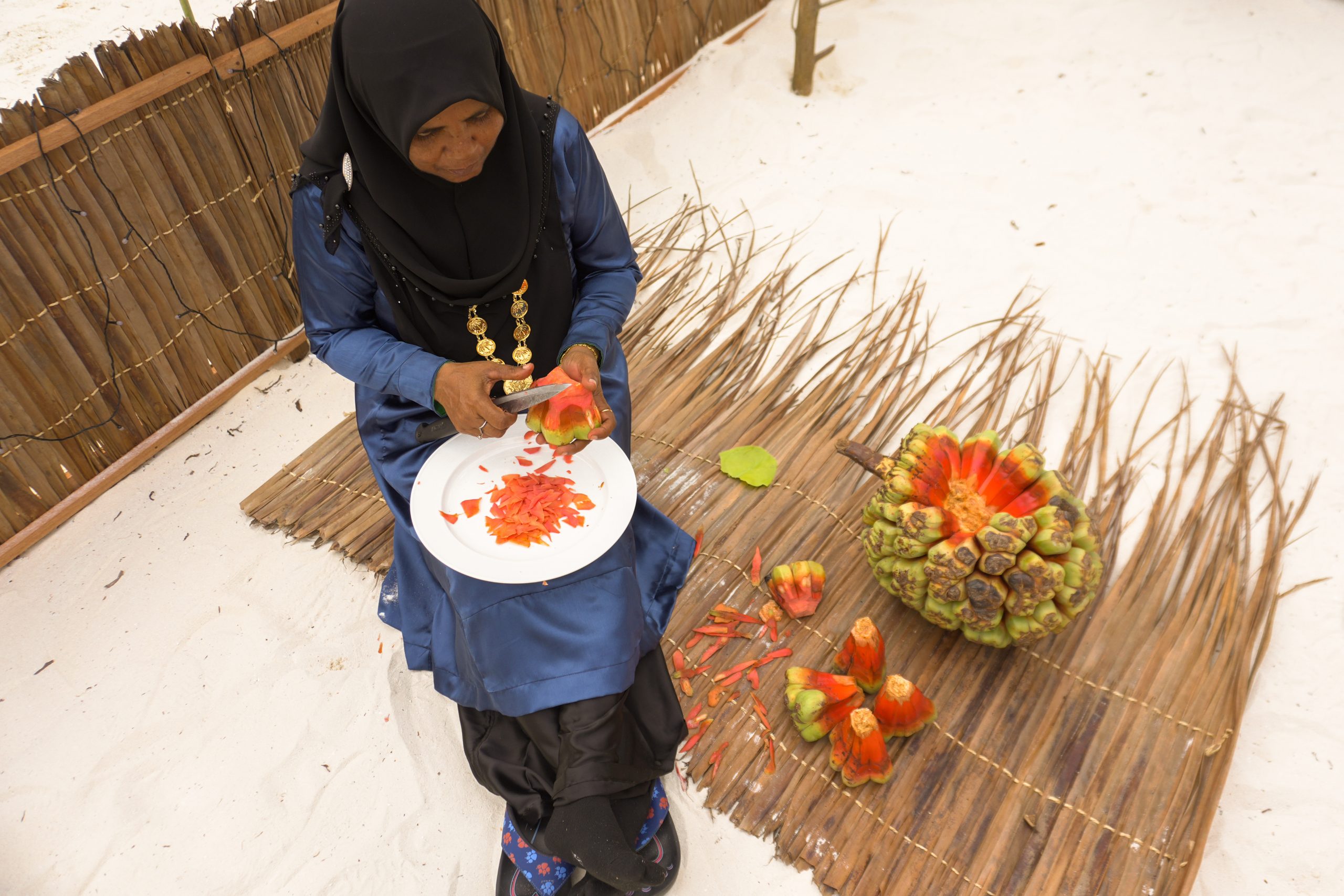
Medhufushi Island Resort recently marked Maldives National Day with an immersive celebration of Maldivian heritage, transforming the resort grounds into a living museum that reflected the country’s cultural roots. The event recreated the atmosphere of a traditional island village and offered guests the chance to experience authentic island life through interactive activities, performances, and storytelling.
The resort team constructed a replica village featuring ancestral-style houses and traditional architecture that demonstrated the resourcefulness of early island communities. Guests explored the structures and learned how Maldivians adapted to their environment over generations. The experience was enhanced by a variety of activities, including food stalls that served traditional dishes, demonstrations of local craftsmanship, and opportunities to take part in games once enjoyed by island families. Musical traditions were brought to life with the sounds of Bodu Beru drums, where visitors not only observed but also participated alongside local performers.
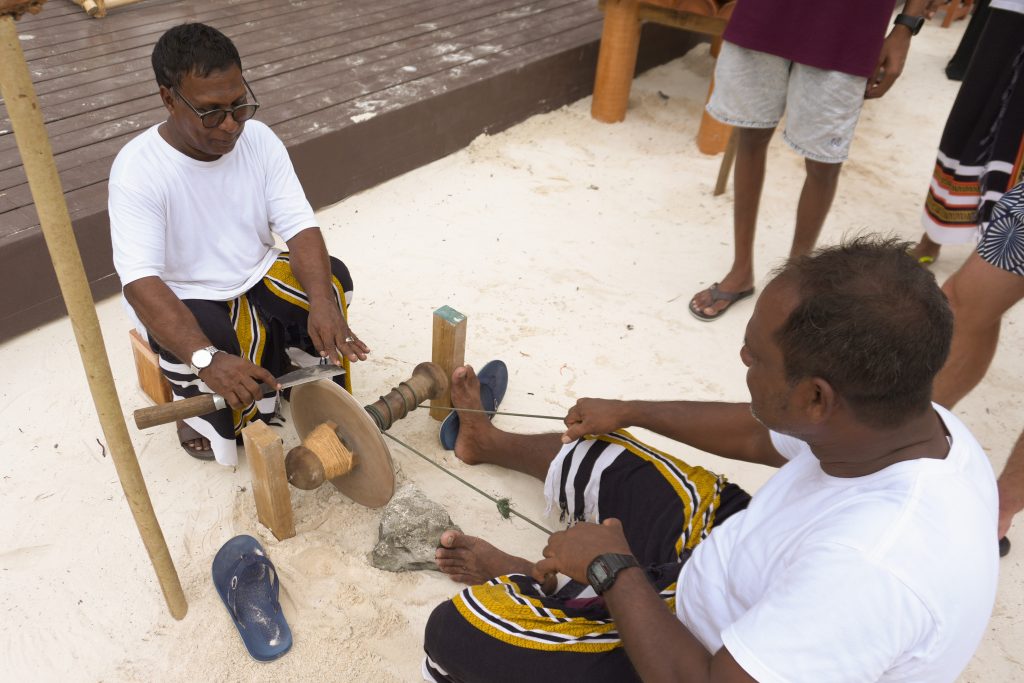
Cultural performances formed the highlight of the evening, with local women presenting traditional dances that narrated stories of island life and men delivering energetic Bodu Beru drum sessions. Guest participation was strong, with many joining in the dances and trying their hand at drumming. One visitor remarked that it felt like stepping into another time and described learning Bodu Beru from locals as an unforgettable experience.
Resort Manager Iyaz explained that the event is organised annually to preserve and share Maldivian heritage with visitors, noting his pride in the team for creating such an engaging showcase and expressing gratitude to the guests for their enthusiasm.
The celebration reflects the resort’s ongoing commitment to promoting cultural preservation through tourism, ensuring that traditional practices remain visible and valued. By offering authentic experiences, Medhufushi Island Resort connects guests with the history and identity of the Maldives while supporting sustainable tourism.
This annual showcase serves not only as entertainment but also as a bridge between past and present, reinforcing the importance of cultural continuity. Through initiatives such as these, the resort demonstrates how tourism can help protect traditions and foster community pride, enabling visitors to leave with more than memories of beaches and scenery, but with a deeper understanding of the people and heritage of the Maldives.
Island Goers
Mouni Roy’s enchanting birthday celebration in Maldives at Coco Bodu Hithi

Bollywood Actor Mouni Roy recently celebrated her 39th birthday in the most picturesque way possible, surrounded by the serene beauty of the Maldives. Accompanied by her husband, Suraj Nambiar, and close friends, Mouni’s birthday festivities were nothing short of magical. She shared glimpses of her celebration on Instagram on October 1, giving her fans a peek into her tropical retreat at the luxurious Coco Bodu Hithi resort.
A Tropical Birthday Bash
Mouni Roy has been soaking up the sun and enjoying the breathtaking views of the Maldives. Her latest Instagram updates have left fans in awe, showcasing her stunning vacation style. In one of her posts, Mouni looks absolutely ravishing in a pink bikini paired with a flowy white skirt. Posing effortlessly on a chair, she exudes confidence and charm, her sun-kissed skin and luscious, flowing hair adding to her radiant look.

Instagram Highlights
The actress shared several posts from her stay at the resort. In a video, she can be seen enjoying the resort’s over-water villa and pool, dressed in a stunning red beachwear. She captioned the post, “Loving it at @coco_resorts #cocoboduhithi #cococollection #cocomaldives #cocollectionmaldives #birthdaygateway.”
Another heartwarming photo featured Mouni with her husband, captioned, “Love & gratitude is all I feel in my heart. Ty so much for all the lovely wishes ♥️ #grateful #thankful #blessed.”
https://www.instagram.com/p/DAkjB2RNjf_/

Memorable Experiences
Mouni also shared a video reflecting on her incredible stay, captioned, “Just returned from an incredible stay at Coco Bodu Hithi Maldives with the Mr & friends, and I can’t stop reflecting on the amazing experiences we shared. Snorkeling in those crystal-clear waters was meditative; the vibrant fishy life left us in awe. 🐠 🌊 One of the highlights was the unforgettable birthday dinner they organized on the beach. The setting was simply magical, with soft sand beneath our feet and the gentle sound of waves. We kept lying down on the sand looking up at the stars. You all took such great care of us, made the evening feel special and intimate. Spending three days immersed in the ocean was rejuvenating, and every moment was filled with laughter and joy. Grateful for these memories and the beautiful bond we share. Until next time, paradise! X @coco_resorts.”
In another post, she expressed her longing to return, captioning it, “Take me back already!!!”
Mouni Roy’s birthday celebration in the Maldives was a perfect blend of relaxation, adventure, and heartfelt moments, making it a memorable occasion for her and her loved ones. Her fans are eagerly awaiting more updates and stunning visuals from her tropical getaway.
Culture
Palace for the prince: Muleeage’s century-long journey through history

It was ‘honeymoon season’ in Suez. Sultan Haji Imadudeen was reigning on a throne of love in Egypt. But back home, those were darker times, as Maldives continued to borrow from Bohra merchants of Mumbai. After all, the wedding expenses of the monarch had to be paid by the state.
Imadudeen has appointed his younger brother, Dhoshee Manippulhu of Maandhooge, as the regent to take care of the state’s affairs, but it was Prince Ibrahim Dhoshimeynakilegefaan of Athireege who ruled. Prince Ibrahim’s son, Abdul Majeed Didi of Athireege, took charge of stabilising the nation.
Backed by the British masters and business elites in Male’, Abdul Majeed Didi began hatching a secret plan. Finally, by the early hours of March 10, 1910, onlookers could understand that something was happening in Muleege. Beeru Mohamed Fulhu, who was at the Friday Mosque, saw the door being opened and Mohamed Shamsudeen being escorted out by his brother-in-law Abdul Majeed Didi and Sayyid Kilegefaanu, also known as Khatheeb Seedhi. The two men accompanied Shamshudeen to Boduganduvaru, the royal palace, and placed him on the throne as Sultan Shamsudeen Iskandhar, Al-Salitc. As Shamsudeen was the brother-in-law of both men, the aim behind the plan could mean more than just stabilising the nation; there might have been personal motives and interests.
After appointing Shamsudeen the sultan, Khatheeb Seedhi told him that no one was ever going to challenge his reign. He said that Shamshudeen was not going to leave the throne unless he wished to do so.
Khatheeb Sidi’s saying became true, as Shamsudeen remained in power for the next 31 years, six months and 28 days. That was until he left behind all the privileges of a king for the sake of his beloved son Hassan Izzuddeen, for whom he built Henveyru Ganduvaru or Muleeage from where he started his journey to become the sultan at one midnight. As the famous public speaker and poet Ibrahim Shihab later said, the sultan abdicated for the only son he ever had.
Muleeage, the presidential palace which is now 105 years old, was originally built for Shamsudeen’s son and the then Crown Prince Hassan Izzudeen. The palace was originally named as Henveyru Ganduvaru. It was a symbol of the king’s love for his son.
The origin of this address goes back to the era of the heroic Sultan Hassan Izzudeen, also known as Dhonbandaarain. This plot of land was first used to build a thatch hut when Muhammad Manik of Mulee shifted his family to the capital city. The house was later inherited by Dhonbandaarain and then by Ibrahim Noorahdeen and then by his son Shamsudeen. Hassan Izzudeen was born to Shamsudeen and Sithi Didi, daughter of Bodu Sidi of Kalhuhurage.
When Izzudeen was studying in Ceylon, Shamsudeen decided to build the house before his son returned home. Shamsudeen decided to build it as a palace for the crown prince.
Fully funded by state coffers, the project was commissioned in 1914. Ahmed Dhoshimeyna Kiligefaanu of Athireege was assigned as the project manager. Architects and builders were brought from Ceylon. Architecture and the design was that of the Victorian era with a touch of colonial architectural design. Furniture too was imported from Ceylon. Few transoms were designed by Easa Mohamed Fulhu from the island of Kela in Haa Alif Atoll.
The palace was opened on December 7, 1919, with a special Mauloodh, a cultural prayer.
Izzudeen came back from Ceylon after his education to live in the palace as “Henveyru Ganduvaru Manippulhu”. He lived with privileges that don’t match with that of any other prince. As he was a highly-skilled musician, the palace became a theatre for music. Izzudeen sang with his beautiful voice whilst also playing harmonium. Boys of his dance group, widely known as “Nashaa Party” danced to his music, dressed as ladies. Boduberu too was part of the fun at the palace. It was full on partying till midnight on most days. It is said that the novel, Dhonthuhkalaage Gellunu Furaavaru (lost teenage of Dhonthuhkala), written by Muhammad Ismail Didi of Meerubahuruge, was based on an incident that happened at the palace.
The elite of Athireege took all that as inappropriate for a crown prince. Their disapproval grew and Izzudeen was considered as someone who is ineligible for the throne. The first written constitution in the history of Maldives was passed as a result. It was written in that constitution that the sultanate will only go to a grandson of Dhonbandarain, effectively removing Izzudeen from the royal inheritance path.
But the constitution was later received by the people as a burden, as new laws were introduced to a population that was not aware of such rules. It made their life miserable.
“We can’t bear this anymore,” they said, as they gathered at the Gulhakulhey Fasgandu, an open area just next to the headquarters of the army, and tore apart the document. They even attempted to bring out some ministers to be dealt with by the mob.
The country then saw increased hostile actions against the government from Izzudeen who tried to take over.
Prime Minister Hassan Fareed issued orders to arrest Izzudeen’s allies. Izzudeen went to Bodubandeyrige, then headquarters of security forces, in person to try save his allies. Shamsudeen left the throne to follow.
The prime minister, who was paving way for the change in government, used this as an opportunity to overthrow Shamsudeen. The latter was banished to Fuvahmulah, in the far south, together with his son Izzudeen.
Izzudeen died on the island after a short ailment, whilst Shamsudeen was brought back to Male’ as his health deteriorated. He died shortly thereafter. Henveyru Ganduvaru was deserted after that.
All the palaces except that of the sultan were later downgraded and Henveyru Ganduvaru became Muleeage, taking the name of the first house built at the address.
Muleeage was used for several purposes for the next 80 years before becoming the presidential palace in 1953. From 1942 to 1947, it was used to house the ministries of home affairs and defence, and the office of the head of intelligence. It also served as the headquarters of the first newspaper in the country, Sarukaaruge Khabaru.
With the first republic that came into being in 1953, Muleeage became the presidential palace, serving as the official residence of Mohamed Ameen Didi, the first president.
As the monarchy was reinstated after overthrowing Ameen and abolishing the republic in a coup, Muleeage became the office of the prime minister. Ibrahim Famuladeyrikiligefaan and Ibrahim Nasir were prime ministers who used the office. At one point during their administrations, Muleeage also housed the ministry of defence.
Presidential palace and several ministries at some point, Muleeage has been in use ever since.
Apart from this, several high profile guests of the state stayed there during their visits. Late Queen Elizabeth and her late husband, The Duke of Edinburgh Prince Philips were amongst those.
Although Ibrahim Nasir, as the first president of the second republic, declared Muleeage as the presidential palace again in 1970, he didn’t use it as such. His successor, Maumoon Abdul Gayoom, was the first president to formally use it as his official residence. He stayed there from 1988 to 1994, before moving to Theemuge, a newly built presidential palace which later became the Supreme Court.
The first Supreme Court, which was the result of the present day constitution, was temporarily housed in Muleeage in 2008. Then came President Mohamed Nasheed who chose to make it the presidential palace yet again. It was also used as the offices of a national inquiry commission, which was setup to investigate the events surrounding Nasheed’s early departure in 2012, before becoming the presidential palace again.
In the century that has passed since Muleeage was built in its current design, it has witnessed numerous historical events in the country. It witnessed the declaration of the first republic and the reinstating of the monarchy. It hosted heads of states as well as ministers from different parts of the world. Indian Prime Minister Rajiv Gandi was one amongst them to be remembered.
Been a place for all that, the status of Muleeage is much more important in our history; it was the childhood home of Hassan Izzudeen, Dhonbandaarain, the heroic sultan who freed Maldives from the short-lived rule of the Malabari invaders, also known as “Holhin”. This was the place from where he came out for his battle with the flag of freedom flying over his head.
-
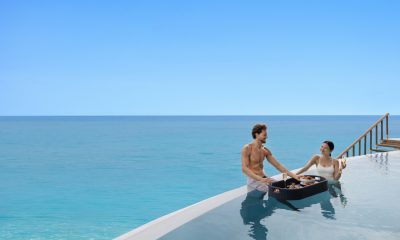
 News1 week ago
News1 week agoFour Centara resorts in Maldives target school-holiday travellers with extended-stay offers
-
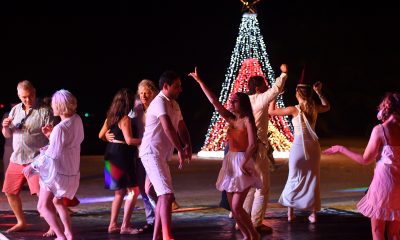
 News1 week ago
News1 week agoCinnamon Hotels & Resorts Maldives wraps Christmas celebrations, prepares NY 2026 line-up
-
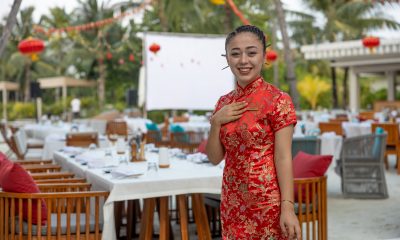
 News1 week ago
News1 week agoKuda Villingili Resort Maldives marks Year of the Horse with four-day Lunar New Year programme
-

 News1 week ago
News1 week agoHoliday Inn Resort Kandooma Maldives unveils week-long Orthodox Christmas celebrations
-
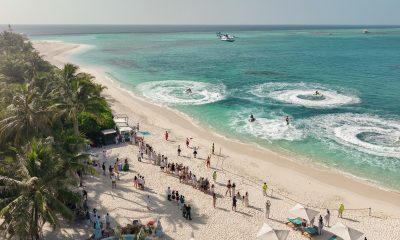
 News5 days ago
News5 days agoInterContinental Maldives Maamunagau rings in 2026 with ocean-inspired festive programme
-

 Drink5 days ago
Drink5 days agoHuvafen Maldives hosts exclusive Riedel Wine experience led by Maximilian J. Riedel
-
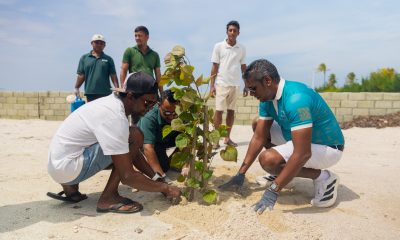
 News6 days ago
News6 days agoSun Siyam Olhuveli marks end of 2025 with sustainability-led programmes
-

 News6 days ago
News6 days agoFinolhu unveils ‘A Year in Colour’ with global artist residencies in 2026











